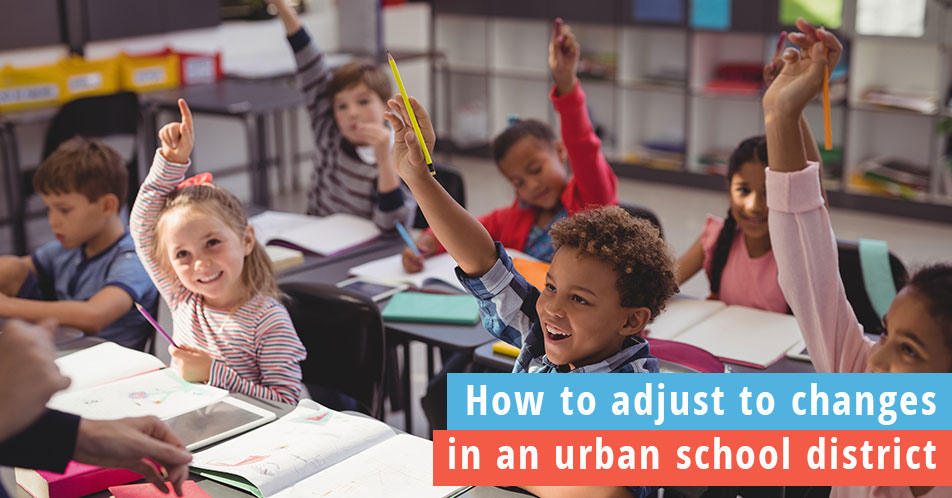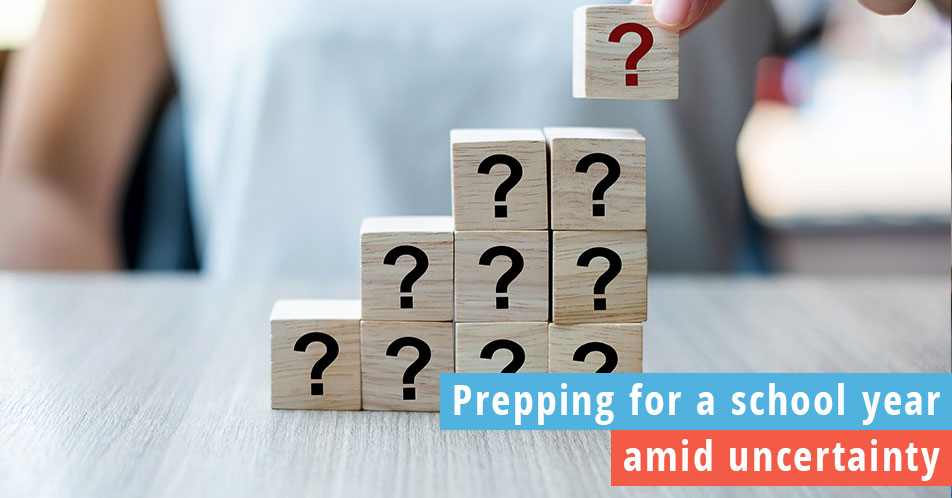Discussing how to adjust to changes in an urban school district
This episode of our podcast features a conversation with Carolyne Albert-Garvey. She was the reason that Joel’s family moved, as they wanted the kids to attend Maury Elementary School in the District of Columbia Public Schools. Joel and his wife had one meeting with her and knew she was the right principal for their children. In this episode, Joel and Carolyne discuss how to adjust to changes in an urban school district.
Joel talks with Carolyne about helping an urban school adjust to changes, from demographics to funding.
He asks about the changes Carolyne had to navigate, especially that the school lost its Title I funding.
“Gentrification is happening everywhere in that community, and in other places in DC as well,” Carolyne says. “When I first started at Maury the school was mostly African-American with about 70% of the students qualifying for free and reduced lunch, which did give us that Title I status (for extra funding).”
Maury also qualified for an aftercare program. Carolyne says it was about four years into her time at Maury that the percentages flipped as more white and middle-class families moved into the area and they lost Title I status.
“The loss of funding was significant,” she says. “We still had so many students who needed the additional support, like reading intervention. Kudos to the Maury community for understanding how complex gentrification is in an urban environment.”
Carolyne says they were able to continue providing the high-quality level of intervention and services to students because of the additional support of the PTA. Not all PTAs want to spend money on intervention because the impact is on a specific subgroup of students.
They worked hard to raise money and launch a think tank and support the literacy lab for reading intervention.
“From a financial perspective we really were able to keep the community going thanks to our parents,” she says.
Joel asks how Maury approached strategic planning, knowing they have to look two to three years down the road.
Carolyne says she looked at it through two lenses. The first was long-term planning, knowing they had to have a clear vision of what the school should look like in three to five years, keeping up with the research on what’s best for kids and learning. At the same time, every year they took a close look at how the families currently in the building were being served.
“So that we could make sure that we were addressing the needs, the wants, the hopes and the dreams of the families who were coming through our doors every single day,” Carolyne says. “And I think we did a great job with that.”
Joel asks how those two viewpoints are balanced.
“By keeping our students right at the center of everything,” Carolyne says. “When you make sure that you keep students and their hopes and dreams and their needs always as your North Star, then talking and addressing difficult situations becomes a little easier because every single parent wants the best for their child. It doesn’t matter if they’re the most wealthy parent or the most struggling parent. You always have to know your families and your kids and what they’re going through.”
Being there for a long time, Carolyne was able to build relationships with some of the families who had been at Maury for years, while establishing relationships with the newer families.
The school went from 245 students to over 400 students while she was the principal.
Joel asks about a major misconception people have of urban schools.
“Very sadly, they immediately get this look of almost pity,” she says. “But I would always proudly say, I am a D.C. principal. I still introduce myself as that.”
Carolyne says she invites everyone to come to the school to see the amazing quality of teachers and the level of engagement of our parents.
Joel asks Carolyne what she would change if she could change one thing about public education.
“I would probably say, at a higher level, teacher preparation,” she says. “I’m not sure that all of the universities that we recruit from have moved as quickly as we have at the public school level in what’s expected of teachers. Of course, there’s some great schools out there who do great work and we recruit some great teachers at Maury. Overall, though, I have to wonder if all of our teacher preparation programs at the university level are where we are right now in regards to equity and rigor and addressing bias, mindset issues, brain research.”
Closing out the episode, Carolyne recommends listeners read the book Between the World and Me by Ta-Nehisi Coates.
Read the full We Love Schools podcast episode about how to adjust to changes in an urban school district.
Interested in learning more about how the Allerton Hill Communications team can help your school? Contact us today.
Be sure to subscribe to We Love Schools on iTunes.



